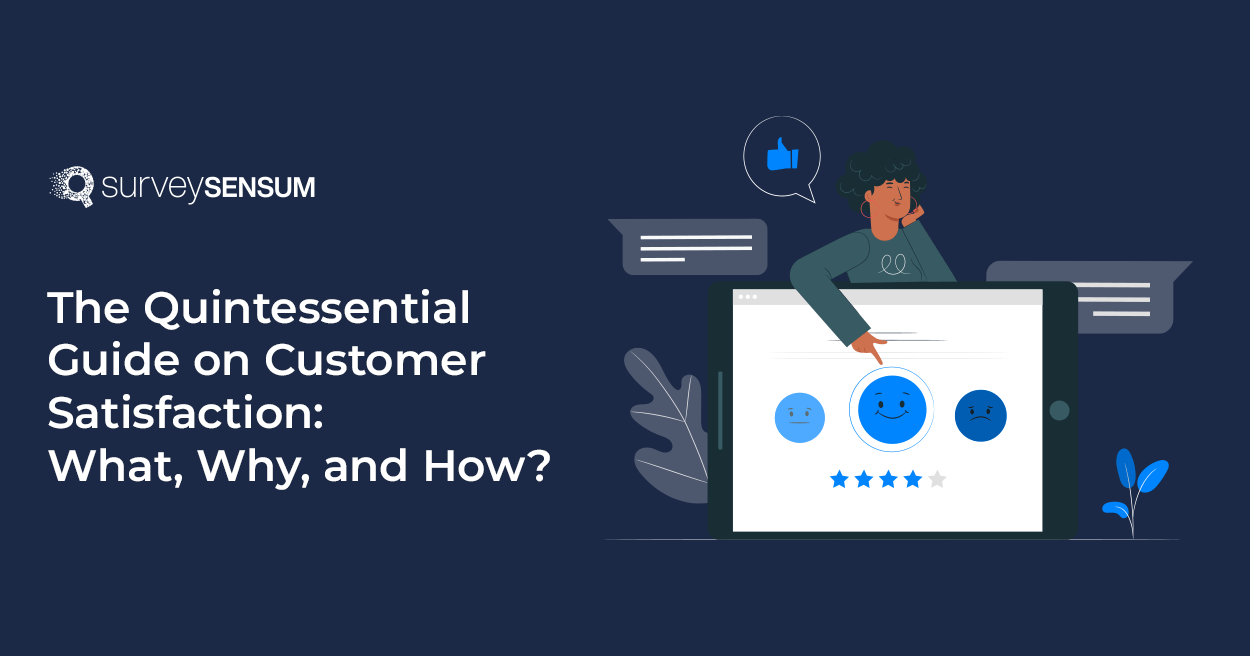The Ultimate Guide to Mastering Customer Satisfaction Surveys
Welcome to our comprehensive guide on conducting effective customer satisfaction surveys. In today’s competitive business landscape, understanding and improving customer satisfaction is crucial for success. Customer satisfaction surveys provide valuable insights into customer perceptions and experiences, helping businesses make informed decisions and enhance their overall customer experience.
Designing Effective Customer Satisfaction Surveys
Before diving into the survey design process, it’s important to determine your survey objectives and target audience. Clearly define what you want to achieve with your survey and who you want to gather feedback from. Next, choose the right survey methodology that suits your audience and objectives. Consider using online surveys for scalability, phone surveys for personalized interactions, or in-person surveys for valuable face-to-face feedback.
Crafting clear and concise survey questions is crucial to ensure accurate and meaningful responses. Use simple language, avoid jargon, and focus on one idea per question. Additionally, be mindful of the survey length and respondent experience. Long surveys can lead to survey fatigue and incomplete responses. Keep your surveys concise and engaging, and consider using progress indicators or rewards to motivate respondents.
Types of Customer Satisfaction Surveys
There are several types of customer satisfaction surveys, each serving a specific purpose:
Transactional Surveys
Transactional surveys gather feedback immediately after specific interactions, such as customer support calls or website purchases. They provide insights into individual experiences and can help identify areas for improvement in real-time.
Relationship Surveys
Relationship surveys assess overall satisfaction and loyalty by capturing feedback on the customer’s entire experience with a company. These surveys focus on long-term relationships and provide a holistic view of the customer’s satisfaction levels.
Post-Purchase Surveys
Post-purchase surveys collect feedback after a customer has made a purchase. These surveys help understand the customer’s experience throughout the buying process, including factors like product quality, delivery, and customer service.
Touchpoint Surveys
Touchpoint surveys measure satisfaction at different customer touchpoints, such as website visits, interactions with sales representatives, or social media engagement. These surveys provide insights into specific moments in the customer journey and help identify areas where improvements can be made.
Implementing Customer Satisfaction Surveys
Implementing surveys effectively requires careful planning and execution:
Selecting Appropriate Survey Distribution Channels
Choose the right channels to distribute your surveys based on your target audience’s preferences and behavior. Consider email, website pop-ups, social media, or in-app surveys. Experiment with different channels and measure response rates to determine the most effective distribution methods for your audience.
Timing the Surveys Strategically for Maximum Response Rates
The timing of your surveys can significantly impact response rates. Consider sending surveys immediately after a transaction or interaction while the experience is still fresh in the customer’s mind. However, be mindful of not overwhelming customers with too many surveys or contacting them at inconvenient times.
Ensuring Survey Anonymity and Data Privacy
Customer trust is essential when collecting survey data. Assure respondents that their responses will remain anonymous and their data will be handled securely and confidentially. Clearly communicate your privacy policy and obtain necessary consent if required by data protection regulations.
Encouraging Survey Participation
To increase survey participation rates, communicate the value of the survey and how their feedback will contribute to improving their own experience. Consider offering incentives, such as discounts or entry into a prize draw, to motivate participation. Additionally, make the survey experience user-friendly, with intuitive interfaces and mobile responsiveness.
Analyzing and Interpreting Survey Results
Once you’ve collected survey data, it’s time to analyze and interpret the results:
Cleaning and Organizing Survey Data
Before analysis, clean and organize the survey data by removing duplicates, outliers, or incomplete responses. Use spreadsheet or survey software to aggregate and structure the data for easier analysis.
Utilizing Data Visualization Techniques for Easier Analysis
Data visualization can help make sense of complex survey data. Use charts, graphs, and visual representations to highlight trends, patterns, and correlations. This makes it easier to identify areas for improvement and communicate survey findings to stakeholders.
Identifying Trends, Patterns, and Areas for Improvement
Analyze the survey data to identify recurring trends and patterns. Look for areas where customer satisfaction is particularly high or low. Pay attention to the comments and open-ended responses, as they can provide qualitative insights and specific suggestions for improvement.
Extracting Actionable Insights from Survey Findings
Translate the survey findings into actionable insights. Identify specific actions or changes that can be implemented based on the feedback received. Prioritize areas for improvement based on their potential impact on customer satisfaction and loyalty.
Taking Action based on Survey Feedback
Customer satisfaction surveys are only valuable if organizations take action based on the feedback received:
Addressing Individual Customer Concerns or Issues
Respond promptly and effectively to individual customer concerns or issues raised in the survey. Provide personalized solutions and ensure that customers feel heard and valued.
Implementing Systematic Changes based on Survey Insights
Use the survey insights to drive organizational changes and improvements. Address recurring issues by updating processes, training employees, or enhancing products and services. Monitor the impact of these changes on customer satisfaction over time.
Communicating Survey Results and Actions Taken to Customers
Transparently communicate survey results and the actions taken based on customer feedback. This demonstrates that the organization values the opinions of its customers and is committed to continuous improvement. Sharing the results also helps manage customer expectations and build trust.
Best Practices for Customer Satisfaction Surveys
Here are some best practices to keep in mind when conducting customer satisfaction surveys:
Keeping Surveys Simple and User-Friendly
Avoid complex or ambiguous language in your survey
questions. Make the survey experience intuitive and user-friendly, with clear instructions and a logical flow. Test your surveys with a small group before launching them to identify any usability issues.
Monitoring Survey Response Rates and Adjusting Accordingly
Regularly monitor survey response rates and adjust your survey strategy as needed. If response rates are low, consider optimizing the survey design, distribution channels, or incentives. Continuously strive for higher participation rates to ensure representative feedback.
Regularly Reviewing and Updating Survey Questions
Customer needs and preferences change over time, so it’s essential to review and update your survey questions periodically. Stay up to date with industry trends and customer expectations to ensure your surveys remain relevant and effective.
Incorporating Customer Feedback into the Continuous Improvement Process
Customer satisfaction surveys are just one part of the continuous improvement process. Actively incorporate customer feedback into decision-making processes, product development, and service enhancements. Foster a customer-centric culture that values and acts upon customer input.
Conclusion
Customer satisfaction surveys are powerful tools for businesses to understand their customers, enhance their experiences, and drive continuous improvement. By following the guidelines and best practices outlined in this guide, you can design, implement, and analyze surveys that provide valuable insights and drive actionable changes. Prioritizing customer satisfaction surveys will not only improve customer loyalty but also contribute to long-term business success in today’s competitive landscape. So, start listening to your customers and embark on the journey of customer-centricity today!



